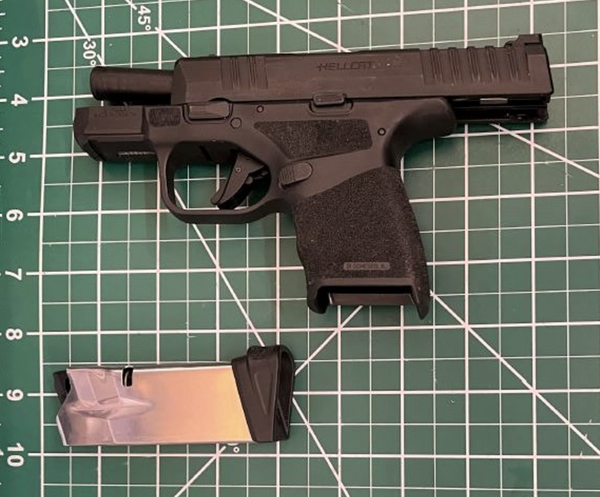
Counter-terrorism police are removing “a large amount” of homemade gun-making guides from the internet amid fears that far-right extremists are producing 3D-printed firearms to use on the streets of Britain.
Detectives have said DIY guns are increasingly viable and include semi-automatic weapons that can fire multiple rounds at a time.
Last week, a teenage extremist from Derbyshire was ordered to serve 11 and a half years in a young offender institution for encouraging racist attacks and attempting to make a “highly dangerous” FGC-9 firearm with a 3D printer.
The judge, Patrick Field KC, said the gun that Daniel Harris, 19, tried to build was “intended for use in a terrorist outrage” in Britain and that his failure was only “a matter of good fortune”.
DI Chris Brett, from Counter-Terrorism Policing East Midlands, told the Guardian the easy availability of gun-making manuals online was “a threat” and that officers were removing “a large amount” of that material, often produced by gun enthusiasts in the US.
He said: “We’ve got a number of teams in counter-terrorism specifically focused on removing extremist content from the internet and that includes instructional stuff on weapons. We would appeal to the public to report that material if they come across it on the internet.”
It took the Guardian just three clicks from Google to find a 194-page instruction booklet to build a semi-automatic FGC-9 firearm, which Harris tried to construct at his grandfather’s house in Glossop.
It took under five minutes to find a Florida-based website selling metal gun components for only £122. They were disguised as wind chimes to evade detection during delivery.
Tutorial videos are posted online often by US-based gun enthusiasts with thousands of followers. Although YouTube has strict rules against posting gun-making manuals, influencers are able to get around the restrictions by directing their followers to videos on other YouTube-style sites.
The National Crime Agency warned in November that the latest 3D weapons were “credible and viable” and “stuff that you definitely, definitely wouldn’t want to see on the streets in the UK”.
A month earlier, the Metropolitan police uncovered a suspected makeshift 3D firearms factory at a house in London.
Peter Squires, a professor of criminology and public policy at the University of Brighton, said the discovery – along with several more across Europe and Australia last year – appeared to have been “kind of a wake-up call” for UK police.
Terrorism experts have warned that the homemade weapons appear to becoming more popular with extremists, particularly far-right groups online. In 2019, a neo-Nazi shot two people with a homemade firearm during a racist attack on a synagogue in Halle, eastern Germany.
Dr Rajan Basra, senior research fellow at the International Centre for the Study of Radicalisation at King’s College London, said there had been cases in Spain, Sweden, Germany, the Netherlands and the UK of extremists seeking to make 3D-printed firearms.
“Far-right influencers online have been encouraging all of their supporters to make these [guns] and linking directly to the files,” adding that many gun-making manuals were “alarmingly” easy to find.
Basra said they were popular among rightwing extremists who, he said, were “preparing for a future race war”. He said: “They may not necessarily have an attack plan in mind but they’re at the stage where they think they already need to get hold of a firearm.”
Squires said the earliest 3D printed handguns, including one known as “the Liberator”, were rudimentary and fairly straightforward to make but that more recent iterations were “much more serious” but were not “quite so easy to put together in your garage”.
However, he said the threat would grow as the technology improved and particularly if homemade “ghost” parts – which do not carry serial numbers – make it into the component chain.
He added: “I don’t think anyone disagrees with the idea that this is going to get worse. Last year was a kind of wake-up call. I can’t imagine it’s going to become anything but more significant.”







